June 3, 2011
Coexisting with Nature: Reflections after the Devastating 2011 Earthquake in Japan
Keywords: Newsletter
JFS Newsletter No.105 (May 2011)
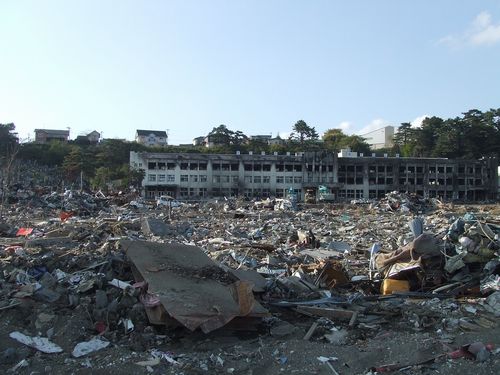
Photo by Junko Edahiro
On March 11, 2011, the Great East Japan Earthquake hit, causing devastation to the Tohoku District, and compounded by the massive tsunami and subsequent earthquakes. The death toll exceeded 15,000 and nearly 10,000 people are still missing. From April 29 through to May 10, I stayed in the city of Ishinomaki, Miyagi Prefecture, one of the worst affected areas, to help out at a local office of JEN, an international nongovernmental organization (NGO) engaged in disaster relief (originally established as "Japan Emergency NGOs").
Ishinomaki is the second largest city in Miyagi Prefecture, with a population of about 160,000. Almost 3,000 lives were lost in the disaster here, and a large number of houses were swept away by the tsunami. Two months after the earthquake, more than 8,000 residents, accounting for nearly 5 percent of its population, were still living in over 100 shelters scattered across the city.
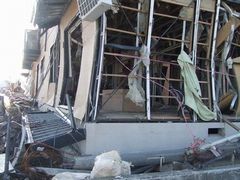
Photo by Junko Edahiro
On my trip to Ishinomaki, I took a two-hour ride from Tokyo to Sendai on the Shinkansen bullet train and then a 90-minute ride on an expressway bus. The rail line, named the Senseki Line, runs from Sendai to Ishinomaki along the coast and was badly damaged by the disaster. I heard that it might take several years to be completely restored. When I entered the city, I was surprised at the sights I saw, totally out of the ordinary. Along both sides of the roads were piles of various abandoned household goods that had been washed up by the tsunami. Furniture, household appliances, tatami mats, bedding, and more. The tsunami had reached several kilometers inland. I saw some houses still standing, but their first floors appeared no longer habitable.
I took a taxi from Ishinomaki Station to JEN's local office. I didn't ask any personal questions on the way, but the elderly taxi driver started to tell his sad story bit by bit: "I'm staying in a shelter at an elementary school; I had never imagined that my home would be hit by a tsunami. During the first ten days after the earthquake, the shelter was so crowded that I couldn't even find a space to lie down to sleep. I can't live in my destroyed home, and I don't have enough money to rebuild it. To move into a temporary housing unit, I have to win a highly competitive lottery. Even if I did win, that house would only be a temporary residence, after all. I have no place to go. Many neighbors around me were killed by the disaster. Everybody told me that I was lucky to have escaped death, but I'm not so sure. Survivors like me have to keep on living with all sorts of worries. If I had died, I might have felt pain, but it would have been just for a moment. I wonder sometimes which would have been better."
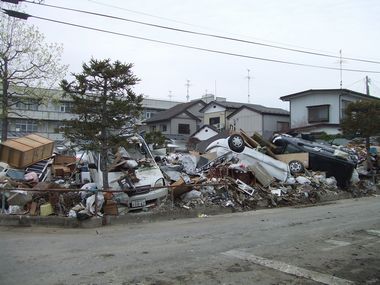
Photo by Junko Edahiro
After a visit to JEN's office, I went by car to a seaside area and was stunned by the scene before me. Heaps of rubble stretched as far as I could see. Destroyed and covered by mud were parts of houses such as pillars and boards, along with furniture and various typical household items. Cars were scattered all around; some just the body frames, others upside down. I saw signs saying "Already Searched" on car windows, wheelchairs left overturned, and stuffed toy animals peeking out of the mud.
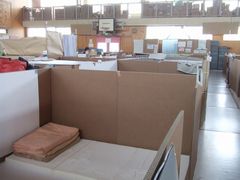
Photo by Junko Edahiro
I also visited some shelters. In the gymnasium of one elementary school, each evacuee had a space measuring roughly a few square meters as temporary accommodations, and they were using cardboard cartons as partitions for each household. Meals were bread, cup noodles, and boxed meals distributed by the city or delivered as food assistance from all over Japan, or warm meals served by personnel from the Japanese Self Defense Forces. In some shelters, evacuees took turns preparing meals. However, inadequate nutrition, caused especially by lack of vegetables, is a general concern for evacuees.
Other people not in shelters were staying temporarily with relatives or friends. Although about 10,000 temporary houses are needed in Ishinomaki alone, the number of houses under construction or even being planned was barely 1,800 (as of the end of April), since it is still difficult to secure available building sites in the area. The administration of procedures required to construct any temporary houses are divided up among government offices as follows: the central government, for procuring materials; the municipal governments, for procuring sites; and the prefectural government, for arranging construction. With these offices smoothly coordinating the work, I hope that everyone who needs a house will be able to move into a temporary one as soon as possible.
The experience of personally seeing damaged sites and hearing what had happened provoked a lot of thoughts, one of which was about humanity's "coexistence with nature." Being a land of frequent earthquakes, Japan has experienced many huge tsunamis in the past. Typhoons also hit it as many as 10 times a year sometimes. As it is located in the monsoon climate zone and nearly 70 percent of the land is covered with steep mountain forests, the country often experiences natural disasters such as floods and landslides caused by heavy rains.
Ishinomaki had a solid embankment built along the shore. The city and its residents believed that it would provide sufficient protection against a tsunami, but this time the tsunami was much higher than the embankment and it devastated the area, leaving behind massive damage. I keenly felt the weakness of humans and human-made things in the face of natural threats like earthquakes and tsunamis.
We often use the expression "coexistence with nature." It's often found in the corporate social responsibility (CSR) reports of companies, and it definitely becomes a topic when discussing town-building activities. After seeing the situation in Ishinomaki, however, I began to think the expression is used merely superficially and is too optimistic. I think we refer to coexistence with nature when we establish a natural environment around us as something we can appreciate, which would never attack us, as if it were a miniature garden.
Most Japanese towns, including Ishinomaki, were planned and built based on the idea of combating threats from nature with technology. In this case it was to establish a solid embankment that could withstand a tsunami, but at Ishinomaki the embankment was destroyed because the tsunami was much bigger than people using modern technology had predicted. What do we need to do now? Is a more fortified and higher embankment the solution? The city of Kamaishi in Iwate was also badly damaged as the tsunami surged and overflowed its embankment. It had built a huge one after learning lessons from the earthquake and tsunami in Chile in 1960, but it was still useless.
The city of Miyako in Iwate also suffered considerable damage from the tsunami, but in contrast the people from the city's Aneyoshi region were all found safe. This region was once destroyed almost completely when it was hit by the Meiji Sanriku Tsunami in 1896 and the Showa Sanriku Tsunami in 1933. The number of survivors from these tsunamis was said to be two and four, respectively. There is a stone tsunami marker erected on a mountain path about 500 meters away from the shore, on which warnings are inscribed to be passed on to descendants to remember the importance of having houses on a hill. People from the region have kept in their mind the warning on the marker: "The tsunami reached here." "Do not build houses below this point." "Be cautious even after years have passed." Every house in the region is built on sites above the marker, so no damage to people and houses was reported here.
Open floodplains used to be found in many monsoon regions in Asia. Although heavy typhoon rains cause flooding and overflowing rivers, they also contribute to bringing nutrients from upstream, which in turn help boost crop harvests. I learned that people in the old days didn't try to stop flooding. They left spaces open for flooding on the floodplain in case of any overflow and avoided living there. People were adjusting their own activities to natural rhythms.
As the population has continued to grow and people thinking that they can build houses anywhere they want as long as they pay for them, they began building houses on flood plains and ended up suffering from greater damage caused by typhoons and flooding. For people living by a river with a high risk of flooding, it is now normal to expect engineered high embankments to contain the enormous threats from nature.
"All life, including human beings, is sacred and kept alive by everything in the universe." This is an eastern idea. The concept means that we live in a web woven of all that exists, both animate and inanimate.
The ancient Chinese philosophies of Laozi and Zhuangzi include the basic concepts of "naturalness" and "non-action," suggesting that instead of trying to manipulate or resist nature, fitting ourselves into the natural world is the most appropriate attitude.
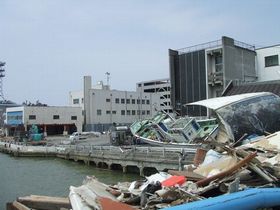
Photo by Junko Edahiro
A woman who was evacuated to a local temple and now takes care of dozens of evacuees including elderly people at the shelter said, "I love the sea. The tsunami hit and swept my house away, but it can't be helped. Television broadcasts reported about people who felt betrayed by the sea or blame it on this disaster, but I have never felt like that. I live close to the sea because I love it, so I don't blame it. I'll live by the sea again, although I'm thinking about living somewhere uphill next time." She reminded me of the concepts of non-action and naturalness.
"Naturalness" here is a mode of being in accordance with the ways of nature. To gain such naturalness, Laozi and Zhuangzi preached that non-action is important. In their idea, the opposite of non-action is "artificiality," attempts by people to put something natural under their control. Examples of artificiality here are trying to block tsunamis or flooding with engineering technologies.
Should humanity regard nature as an object that needs to be suppressed and controlled, or just let it go and go along with its natural oscillations? The earthquake and tsunami disaster has given us an opportunity to reconsider the relationship between humanity and nature and how we should perceive it.
People in the disaster areas, including those in Ishinomaki, have started discussing and working on reconstruction plans. Some towns might choose to build higher and stronger seawalls, while others might decide to pass on the tough lessons from the tsunami disaster this time to future generations by telling them that we should not live too close to the water's edge because it is the realm of nature. There is no single and ultimately correct answer. Yet I strongly hope that future city planning is developed with longer time perspectives to enhance resilience, not just short-term efficiencies, and that planning and reconstruction in the affected areas are carried out using the hard lessons learned from this disaster.
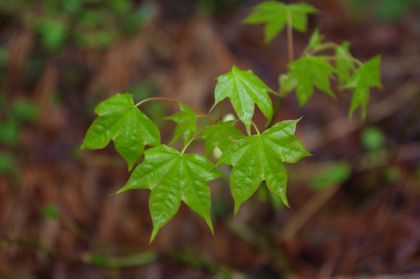
Photo by Japan for Sustainability
Written by Junko Edahiro
Related
"JFS Newsletter"
- 'Good Companies in Japan' (Article No.4): 'Eightfold Satisfaction' Management for Everyone's Happiness
- "Nai-Mono-Wa-Nai": Ama Town's Concept of Sufficiency and Message to the World
- 'Yumekaze' Wind Turbine Project Connects Metro Consumers and Regional Producers: Seikatsu Club Consumers' Co-operative
- Shaping Japan's Energy toward 2050 Participating in the Round Table for Studying Energy Situations
- 'Good Companies in Japan' (Article No.3): Seeking Ways to Develop Societal Contribution along with Core Businesses


